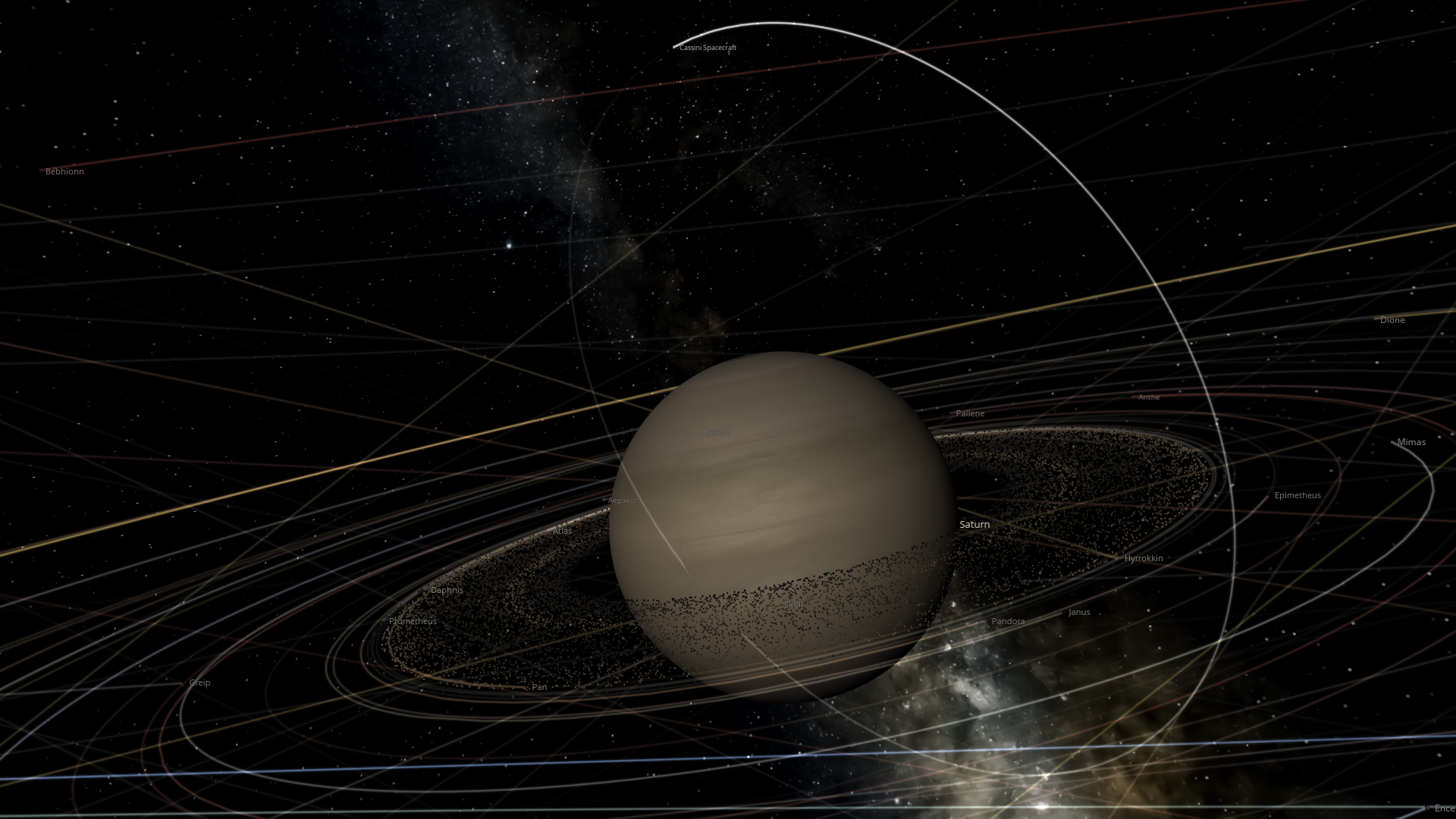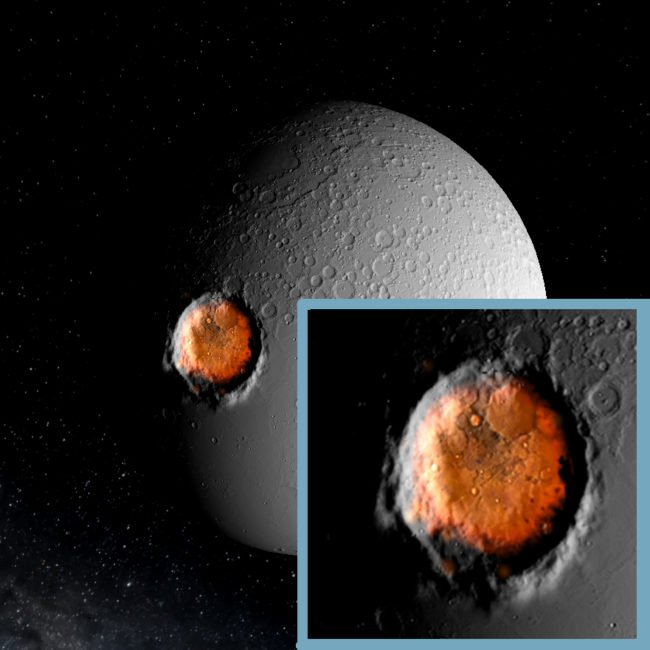Cassini’s Limitations in Universe Sandbox ²

It’s been two weeks now since we said goodbye to the Cassini spacecraft. After its 20-year-long mission in space, it was running low on fuel, so NASA directed it toward Saturn in order to eliminate the risk of it contaminating the moons. On September 15, 2017, Cassini sent its final image back to Earth before disintegrating in Saturn’s atmosphere.
To commemorate this event, we released Ciao, Cassini | Update 20.2 which featured a simulation of Cassini’s final hours and collision with Saturn.
See Cassini’s final hours in Universe Sandbox ²:
Home > Open > Core/Historical > Cassini collision with Saturn on September 15, 2017
Home > Tutorials > Science > What Is Cassini’s Grand Finale?
Simulation Limitations
We had initially been wary of including a simulation of this event, as there are several limitations in Universe Sandbox ² that reduce the realism of this particular simulation. In the end, however, we decided it was still an informative and interesting visualization of an event that is very important to science and the world.
But instead of brushing these limitations under the rug, we’d like to take a closer look at them.
1 – Atmospheric Entry
We love collisions in Universe Sandbox ². But just because an object is on a collision course with a planet, that doesn’t mean it should actually collide with that planet in every scenario. If it’s small enough, then it should instead disintegrate in the planet’s atmosphere. This is what happened to Cassini as it entered Saturn’s atmosphere.
Universe Sandbox ² doesn’t yet simulate the forces associated with atmospheric entry, like atmospheric drag and aerodynamic heating. So instead, small objects will simply collide with planets. We’re very interested in simulating these effects in Universe Sandbox ², not just for objects like Cassini, but also for meteoroids that should burn up in an atmosphere, creating meteors or “shooting stars.”

An animation from Wikipedia of a meteoroid losing material as it enters Earth’s atmosphere
2 – Rocket Engines & Spacecraft Flight
Cassini didn’t stay in orbit around Saturn for 13 years, weaving through its rings and doing close flybys of its moons, all by the grace of gravity. No, its trajectory was carefully planned by engineers and frequently adjusted with its rocket engines. But while Universe Sandbox ² has models of various spacecraft, it doesn’t yet include any way to simulate or control propellant. You can manually change an object’s velocity, but you can’t apply a force to it in the same way that a rocket engine would.
We’re still a while away from controlling thrust on spacecraft and flying them through simulations in Universe Sandbox ², but we’re taking steps in that direction with our work on rigid body physics. This new tech will better simulate the physics of smaller-scale objects, such as spacecraft, allowing for precise collisions and parts that can be attached with breakable joints and other constraints.
3 – Minimum Size for Impact Visuals
When the Shoemaker–Levy 9 fragments collided with Jupiter, observers from Earth could see marks on Jupiter that were more easily visible than the famous Great Red Spot. Some of these fragments were larger than one kilometer in diameter. The Cassini spacecraft, on the other hand, was only about 6.8 meters high and 4 meters wide. Its disintegration in Saturn’s atmosphere should not be easily visible, and even if it were to collide with Saturn instead of disintegrating, it should not leave a large impact mark. [Our Cassini update added a quick fix for this problem to disable an impact mark for its collision.]
Unfortunately, in Universe Sandbox ², impact marks have a minimum visual size. This minimum size is much larger than it should be for small asteroids and human-sized objects. The alternative is to not show any impact mark at all, but that can also be unsatisfactory. There are technical reasons for this limitation, but let’s not worry about those, because there’s good news…
We are currently working on a new system which will allow for impact marks and craters of any size, no more minimum. And on top of that, the new system will be a lot faster, too, and scale to the system resolution, which should help lower-end hardware a lot.

Work-in-progress screenshot of the new impact visuals in Universe Sandbox ²/span>
Opportunities, Not Limitations
The first rule of self-criticism (which we didn’t follow above) is that it’s necessary to throw things in a positive light. Drawbacks, weaknesses, limitations — they’re all opportunities for improvement! Often times these simulations of historical events are great tests of the simulation. When we put in the known properties and velocities for a set of bodies, does the simulation play out similarly to how it did in observed reality? If something is different, how can we improve the simulation in order to achieve the same results? But if instead it’s remarkably similar, as it sometimes is, then we can give ourselves a nice pat on the back and sit back and relax… Until we load a different simulation and notice another opportunity for improvement. We often say that building a universe simulator is never a completed job. A big chunk of that lies within our commitment to continuously notice where we can improve, and then take the necessary steps to make these improvements.
The above items are all on our to-do list, though we can’t promise when they will be added to Universe Sandbox ². Learn more about what we’re working on in our 2017 Roadmap.
For the latest Universe Sandbox ² news, follow us on Twitter and Facebook.

about 6 years ago
why don’t you add the ability to shred planets